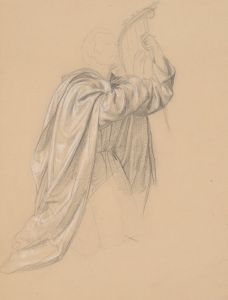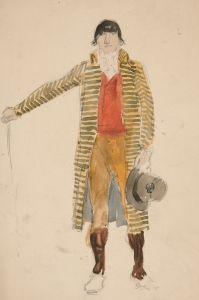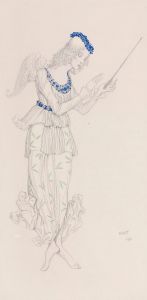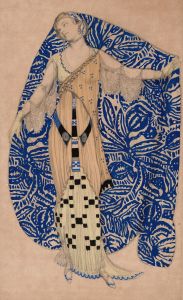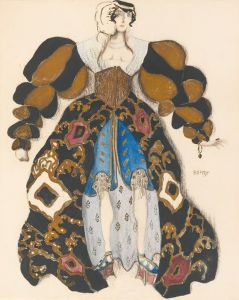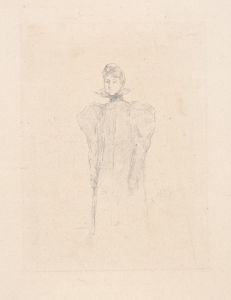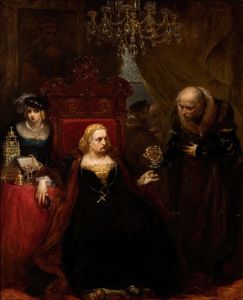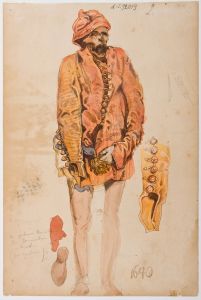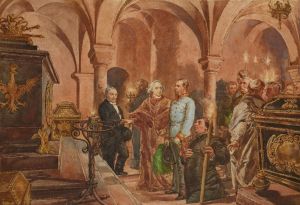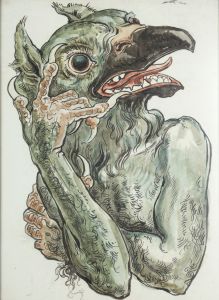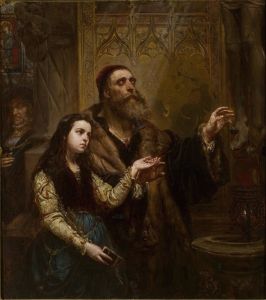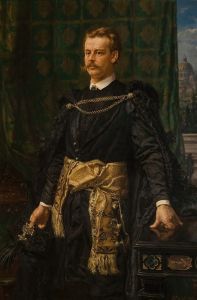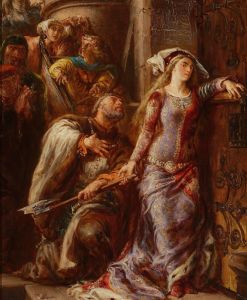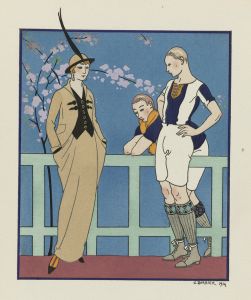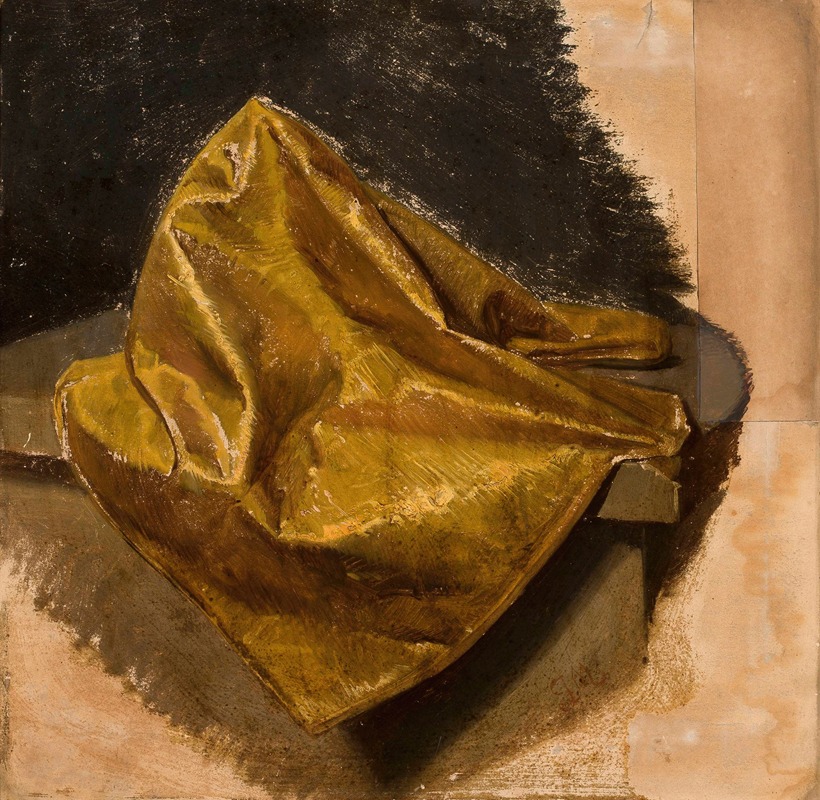
Golden fabric, study for men’s attire
A hand-painted replica of Jan Matejko’s masterpiece Golden fabric, study for men’s attire, meticulously crafted by professional artists to capture the true essence of the original. Each piece is created with museum-quality canvas and rare mineral pigments, carefully painted by experienced artists with delicate brushstrokes and rich, layered colors to perfectly recreate the texture of the original artwork. Unlike machine-printed reproductions, this hand-painted version brings the painting to life, infused with the artist’s emotions and skill in every stroke. Whether for personal collection or home decoration, it instantly elevates the artistic atmosphere of any space.
Jan Matejko, a renowned Polish painter, is celebrated for his detailed and historically rich works that often depict significant events and figures from Polish history. One of his lesser-known works, "Golden Fabric, Study for Men’s Attire," showcases his meticulous attention to detail and his interest in historical costumes. This painting is a study piece, which means it was likely created as a preparatory work for a larger composition or as an exploration of the textures and designs of historical garments.
Matejko was born in 1838 in Kraków, Poland, and he spent much of his life dedicated to capturing the essence of Polish history through his art. His works are characterized by their vivid detail and historical accuracy, often serving as visual documents of Poland's past. Matejko's interest in historical attire is evident in many of his paintings, where he painstakingly recreated the clothing of various eras to enhance the authenticity of his scenes.
"Golden Fabric, Study for Men’s Attire" reflects Matejko's fascination with the opulence and intricacy of historical garments. The painting focuses on the rich textures and patterns of the fabric, highlighting the luxurious materials that were often used in the clothing of nobility and significant historical figures. The use of gold in the fabric suggests a connection to wealth and status, which is a recurring theme in Matejko's exploration of historical subjects.
Matejko's studies of attire were not merely artistic exercises; they were part of his broader effort to educate and inform the public about Poland's cultural heritage. By accurately depicting the clothing of different periods, Matejko provided insight into the social and cultural contexts of the times. His attention to detail in these studies helped to preserve the visual history of Poland, offering a glimpse into the past that might otherwise have been lost.
The painting itself, while a study, demonstrates Matejko's skill in rendering fabric and texture. The folds and drapes of the material are depicted with precision, capturing the play of light and shadow on the surface of the fabric. This attention to detail is a hallmark of Matejko's work and contributes to the lifelike quality of his paintings.
While "Golden Fabric, Study for Men’s Attire" may not be as widely recognized as some of Matejko's larger historical canvases, it remains an important part of his oeuvre. It exemplifies his dedication to historical accuracy and his ability to convey the richness of Poland's cultural past through the medium of paint. This study, like many of Matejko's works, serves as a testament to his role as both an artist and a historian, preserving the legacy of Poland's history for future generations.
In summary, Jan Matejko's "Golden Fabric, Study for Men’s Attire" is a reflection of his commitment to historical detail and his passion for capturing the essence of Poland's past. Through his meticulous studies of attire, Matejko not only showcased his artistic talent but also contributed to the preservation of Poland's cultural heritage.





